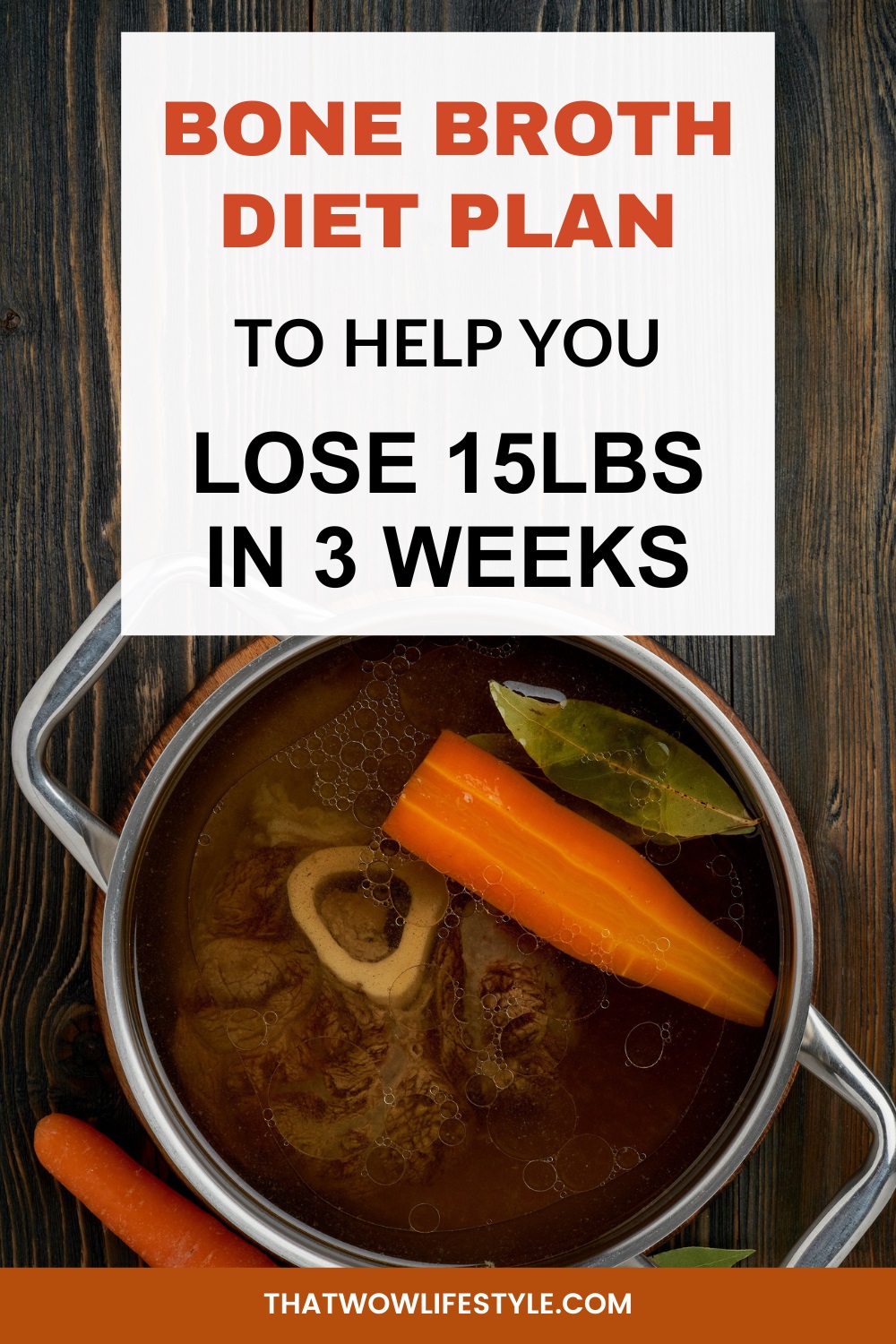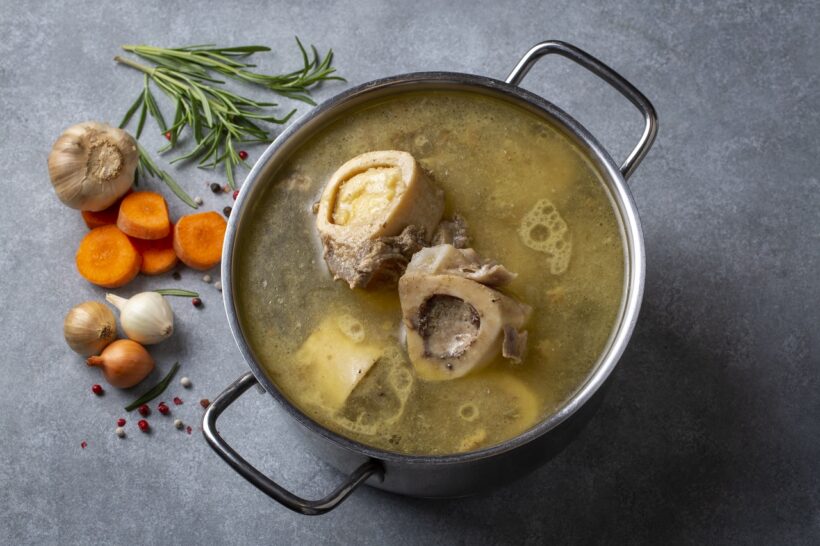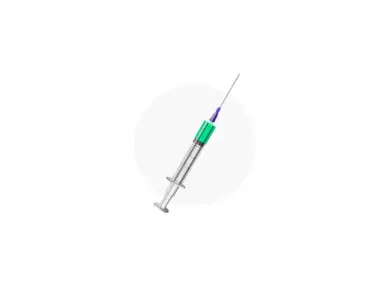Are you curious about the Bone Broth Diet and how it can benefit your health? This 21-day plan combines Paleo principles and intermittent fasting with bone broth consumption. It can help with weight loss and improve overall wellness.
Bone broth is rich in nutrients like collagen, amino acids, and minerals. These can support joint health, digestion, and even skin vitality. The Bone Broth Diet involves drinking bone broth during fasts and eating low-carb, paleo meals during eating windows.
If you’re looking for a way to kickstart healthy eating habits or shed a few pounds, the Bone Broth Diet might be the right choice for you. It’s not just about losing weight; it’s about nourishing your body with high-quality nutrients.
What Is Bone Broth?
Bone broth is a nutritious liquid made by simmering animal bones and connective tissue. It is rich in minerals, collagen, gelatin, and amino acids, providing various health benefits.
History and Basics
Bone broth has been part of traditional diets for centuries. People in many cultures have used it for its supposed healing properties. It is made by simmering animal bones, such as chicken, beef, or fish, along with connective tissues in water with vinegar or lemon juice.
The acidity helps break down the bones, releasing nutrients into the broth. The process usually takes several hours, sometimes even a whole day, to extract as much goodness as possible. The result is a flavorful and nutrient-rich liquid.
Bone Broth vs. Stock
Bone broth and stock are similar but not the same. Both are made from animal bones, but the cooking times and ingredients can differ. Stock is typically simmered for a shorter period, usually 2-4 hours, and may include more meat and vegetables. Its primary use is as a base for soups and sauces.
Bone broth, on the other hand, is simmered for a much longer time, often over 24 hours. This allows more collagen, gelatin, and minerals to be released from the bones and connective tissues, making it more nutrient-dense. People often drink bone broth on its own due to its potential health benefits.
Key Nutrients in Bone Broth
Bone broth is loaded with key nutrients that can benefit your body. Collagen and gelatin are two important proteins found in bone broth. They help support joint health and improve skin elasticity. The long simmering process extracts these proteins from the animal bones and tissues.
Bone broth also contains valuable minerals like calcium, magnesium, and phosphorus, which are vital for bone health. Additionally, it provides amino acids such as glycine and glutamine. These amino acids help in repairing tissues and reducing inflammation.
Drinking bone broth regularly can help boost your overall nutrient intake, especially if you are looking for an easily digestible protein source.
Health Benefits of Bone Broth
Bone broth provides several notable benefits for your joints, gut health, immune system, and inflammation.
1. Joint Health and Bone Strength
Bone broth is rich in collagen, which is a key protein that supports your joints and cartilage. By drinking bone broth, you can help maintain the integrity of your cartilage, reducing joint pain and stiffness.
It also contains important nutrients like calcium, magnesium, and phosphorus, which are critical for bone strength. These minerals help keep your bones healthy and reduce the risk of fractures.
Gelatin found in bone broth can further support joint health by providing the necessary building blocks for joint tissues.
2. Digestive System and Gut Health
Bone broth is known to benefit your digestive system due to the presence of gelatin and amino acids like glutamine. Gelatin helps to protect and heal the mucosal lining of the digestive tract, making it beneficial for people with conditions like leaky gut or irritable bowel syndrome (IBS).
Glutamine is particularly important for maintaining the health of the gut barrier. It helps to reduce inflammation in the gut and supports the growth of new, healthy gut cells.
Collagen in bone broth also aids in digestion, promoting a healthier gut environment by supporting the integrity of the digestive tract.
3. Immune Support and Inflammation
Bone broth can boost your immune system thanks to the amino acids, such as arginine and glycine. These amino acids have anti-inflammatory properties that help reduce inflammation throughout your body.
Hyaluronic acid and chondroitin sulfate, components found in bone broth, also contribute to reducing inflammation.
Drinking bone broth regularly can help bolster your immune system, helping you fend off illnesses more effectively.
Bone Broth Diet Overview
The Bone Broth Diet is a combination of a low-carb, paleo diet with intermittent fasting. It involves consuming bone broth on fasting days, which helps with weight loss and promotes overall health.
Diet Structure
The Bone Broth Diet lasts for 21 days. During this period, you follow a specific eating pattern. For five days a week, you eat paleo-friendly meals. These meals are low in carbs and high in protein.
On the other two days, you practice intermittent fasting by consuming only bone broth. Each day, you drink about six cups of bone broth. This approach helps you lose weight by reducing your calorie intake and promoting fat burning.
Intermittent fasting involves alternating between periods of eating and fasting. Many popular diets, like the keto diet, include this method. Here, fasting days limit your intake to 300-500 calories, which can help boost your metabolism and support weight loss.
What to Eat
During the five non-fasting days, your focus is on eating paleo-friendly foods. This includes lean proteins, non-starchy vegetables, and healthy fats. Foods like fatty fish, nuts, seeds, and avocados are encouraged. High-protein snacks and non-starchy vegetables are essential for maintaining energy levels.
On fasting days, your main intake is bone broth. Options include beef, chicken, or turkey bone broth. You drink six cups of bone broth throughout the day.
You may end the day with a small snack. This could be high-protein foods or vegetables, helping you stay within the 300-500 calorie range. This structure supports weight loss and makes the bone broth diet effective.
Save Pin to Your Favorite Pinterest Board

Preparing Bone Broth at Home
Making bone broth at home involves selecting the right ingredients, choosing the best cooking methods, and knowing how to store and preserve your broth properly.
Ingredient Selection
Start with high-quality bones, such as beef, chicken, or fish bones. For a richer flavor and more nutrients, include bones with marrow and joints.
Vegetables: Carrots, celery, and onions are great for adding flavor.
Herbs and spices: Bay leaves, peppercorns, and garlic enhance the taste.
Apple cider vinegar: Helps extract minerals from the bones. Use about 2 tablespoons per pot of water.
Ensure your vegetables and herbs are fresh. Avoid old, wilted vegetables as they can give the broth a sour taste. Use filtered water to improve the broth’s clarity and taste.
Cooking Methods
Slow Cooker: A slow cooker allows for a gradual cooking process. Combine bones, vegetables, and water, then set on low for 24-48 hours. This method is user-friendly and requires minimal attention.
Pressure Cooker: A pressure cooker speeds up the cooking time, reducing it to about 3-4 hours. It’s ideal when you need a quick batch. However, careful monitoring is necessary to prevent overcooking.
Stovetop: Using a large stockpot, simmer bones and ingredients for 12-24 hours. Maintain a low simmer and occasionally skim off any foam that rises to the top. This method offers control but requires more attention than a slow cooker.
Roasting the bones beforehand, as suggested by some recipes, can deepen the broth’s flavor. To do this, roast the bones at 450°F until browned.
Storage and Preservation
After cooking, strain the broth through a fine mesh strainer. Let it cool to room temperature before storing.
Refrigeration: Store in sealed containers for up to five days.
Freezing: For long-term storage, freeze the broth in silicone ice cube trays or larger freezer-safe containers. Ice cube trays are handy for small-serving portions. Broth can be frozen for up to six months.
Label your containers with the date to keep track of freshness. If you plan to use the broth in a recipe like soup or risotto, defrost only the amount you need.
Choosing Your Bone Source: Chicken or Beef?
The choice between chicken and beef bones for your bone broth affects both flavor and nutrient content. Chicken vs beef bone broth each presents unique advantages:
Chicken bone broth: Typically lighter in flavor, chicken bone broth is known for its high collagen content and rich nutrient profile. It’s easier to digest and is often preferred for soups and lighter dishes.
Beef bone broth: Offering a deeper, richer flavor, beef bone broth is favored for its robust taste and higher mineral content. It’s ideal for hearty soups and stews, providing a different set of nutrients that support joint health and muscle maintenance.
The Bone Broth Diet Plan – A 21-Day Sample Menu
Here’s a detailed 21-day meal plan for the Bone Broth Diet, which combines 5 days of Paleo eating with 2 days of bone broth fasting each week.
Week 1
Days 1-5: Paleo Eating Days
Breakfast:
Day 1: Veggie omelet with spinach, mushrooms, and tomatoes
Day 2: Smoothie with almond milk, spinach, berries, and a scoop of protein powder
Day 3: Scrambled eggs with avocado and salsa
Day 4: Chia seed pudding with coconut milk and fresh berries
Day 5: Greek yogurt with nuts and seeds
Lunch:
Day 1: Grilled chicken salad with mixed greens and olive oil dressing
Day 2: Turkey lettuce wraps with avocado and salsa
Day 3: Shrimp stir-fry with broccoli and bell peppers
Day 4: Beef and vegetable soup
Day 5: Salmon salad with mixed greens and lemon vinaigrette
Dinner:
Day 1: Baked cod with asparagus and a side of sweet potato
Day 2: Grilled steak with a side of roasted Brussels sprouts
Day 3: Chicken and vegetable skewers with a side of quinoa
Day 4: Pork chops with a side of sautéed spinach
Day 5: Zucchini noodles with marinara sauce and ground turkey
Snacks: Bone broth (1-3 servings per day), nuts, fresh vegetables, and fruits
Days 6-7: Bone Broth Fasting Days
All Meals: 4-6 cups of bone broth throughout the day
Week 2
Days 8-12: Paleo Eating Days
Breakfast:
Day 8: Scrambled eggs with smoked salmon and spinach
Day 9: Smoothie with kale, almond butter, and banana
Day 10: Veggie frittata with mushrooms and onions
Day 11: Coconut yogurt with granola and fresh berries
Day 12: Poached eggs with avocado and tomatoes
Lunch:
Day 8: Grilled chicken Caesar salad
Day 9: Tuna salad with mixed greens and olive oil dressing
Day 10: Turkey and avocado salad
Day 11: Beef and vegetable stir-fry
Day 12: Shrimp salad with mixed greens and lemon dressing
Dinner:
Day 8: Baked salmon with a side of roasted carrots
Day 9: Grilled chicken with a side of cauliflower rice
Day 10: Beef stew with root vegetables
Day 11: Pork tenderloin with a side of green beans
Day 12: Chicken curry with a side of steamed broccoli
Snacks: Bone broth (1-3 servings per day), nuts, fresh vegetables, and fruits
Days 13-14: Bone Broth Fasting Days
All Meals: 4-6 cups of bone broth throughout the day
Week 3
Days 15-19: Paleo Eating Days
Breakfast:
Day 15: Veggie omelet with bell peppers and onions
Day 16: Smoothie with spinach, pineapple, and coconut milk
Day 17: Scrambled eggs with turkey sausage
Day 18: Chia seed pudding with almond milk and fresh berries
Day 19: Greek yogurt with nuts and seeds
Lunch:
Day 15: Chicken and avocado salad
Day 16: Shrimp and mango salad
Day 17: Turkey and vegetable soup
Day 18: Grilled steak salad
Day 19: Salmon and mixed greens salad
Dinner:
Day 15: Baked cod with a side of steamed broccoli
Day 16: Grilled chicken with a side of roasted sweet potatoes
Day 17: Beef stir-fry with bell peppers and onions
Day 18: Pork chops with a side of sautéed kale
Day 19: Zucchini noodles with pesto and grilled shrimp
Snacks: Bone broth (1-3 servings per day), nuts, fresh vegetables, and fruits
Days 20-21: Bone Broth Fasting Days
All Meals: 4-6 cups of bone broth throughout the day
This plan provides a balanced approach to the Bone Broth Diet, combining nutrient-rich meals during the eating days and bone broth during the fasting days to support weight loss and overall health.
Culinary Creativity: Bone Broth Diet Recipes
Embrace the culinary creativity the Bone Broth Diet offers by incorporating a variety of delectable dishes that are aligned with its principles. From traditional homestyle favorites to gourmet international flavors, these recipes keep your meal plan engaging and flavorful.
Paleo-Friendly Meals to Enhance Your Experience
Explore an array of Paleo bone broth diet recipes that elevate your dining experience while adhering to the Paleo guidelines. These dishes feature nutrient-dense ingredients, ensuring they cater to the dietary requirements and provide a satisfying meal.
- Butternut Squash Soup with Garlic and Bone Broth
- Spiced Apple-Cinnamon Bone Broth
- Hearty Beef and Vegetable Stew
- Chicken and Kale Salad with Bone Broth Vinaigrette
Diverse Flavors: International Cuisine Adaptations
Add a touch of global flair to your Bone Broth Diet with international bone broth recipes that offer diverse flavors and textures. These adaptations infuse the diet with exciting dishes from different culinary traditions, making it easier to remain consistent with the plan.
- Mexican Pozole with Pork Bone Broth
- Japanese Miso Soup with Fish Bone Broth
- Vietnamese Pho with Beef Bone Broth
- Italian Minestrone with Chicken Bone Broth
By integrating these Paleo bone broth diet recipes and international bone broth recipes, you ensure variety and enjoyment throughout your bone broth nutritional journey. Each dish not only supports your health goals but also offers a burst of flavor, making the Bone Broth Diet a delightful experience.
Comparison to Other Diets
Different diets have unique focuses and benefits. This section looks at how the Bone Broth Diet compares to both Paleo and Keto diets, as well as Vegetarian and Vegan options.
Paleo and Keto
The Bone Broth Diet shares similarities with both the Paleo and Keto diets. Like Paleo, the Bone Broth Diet emphasizes whole foods, such as lean meats, vegetables, and healthy fats. It also avoids processed foods and sugars. By incorporating intermittent fasting, it aligns with the keto emphasis on cycling between periods of eating and fasting to encourage fat burning.
One key difference is that the Bone Broth Diet specifically includes bone broth as a staple. Bone broth provides natural collagen, minerals, and amino acids, which can aid in gut health and joint support. While the Keto diet focuses on high fat and very low carbs, the Bone Broth Diet is generally lower in carbs but not as high in fat. Dietitians may recommend bone broth for its unique nutritional benefits that are not a primary focus in Paleo or Keto.
Vegetarian and Vegan Options
The Bone Broth Diet is quite different from Vegetarian and Vegan diets. Vegetarian and Vegan options focus on plant-based foods, avoiding animal products (completely in the case of Vegans). The heavy reliance on bone broth makes adaptation challenging for those who do not consume animal products.
Vegetarians might incorporate vegetarian sources of nutrients like collagen supplements or vegetable broths, but this isn’t bone broth. Vegans face a more significant challenge since they avoid all animal products. The focus on whole foods is a shared principle, but the Bone Broth Diet’s nutritional goals involving animal-sourced collagen and amino acids are not easily met in a Vegan diet. For a Vegan approach, seeking other protein sources and nutrient-rich foods is essential.
Weight Loss and Fitness
The Bone Broth Diet is designed to help you lose weight by combining low-carb meals with bone broth fasts. It aims to provide a nutrient-dense approach to dieting while potentially aiding your metabolism.
Exercise Compatibility
Exercise is an important part of any weight loss plan. On the Bone Broth Diet, you can continue your usual workout routine. This diet includes enough protein and nutrients to support physical activity. Bone broth is rich in collagen, which supports joint health. This can be especially helpful for those who engage in high-impact exercise.
You might experience more energy on this diet due to the nutrient-rich foods. Still, it’s crucial to listen to your body. If you’re feeling fatigued, adjust your exercise intensity. Combining bone broth with exercise can help improve your overall fitness and aid in sustained weight loss.
Sustainable Weight Loss
Sustainable weight loss is key to long-term success. This diet includes nutrient-dense foods that make it easier to maintain calorie control without feeling deprived. By following a low-carb, paleo-style diet five days a week and fasting with bone broth two days a week, you may see consistent weight loss.
The diet claims to help you lose up to 15 pounds in 21 days. Despite its potential effectiveness, it’s important to remember that no single diet guarantees results. Sticking to the plan and making healthy lifestyle choices will contribute to your fitness goals and improve your metabolism over time. For more detailed information, check out the information available on Healthline and other sources.
Safety and Considerations
When incorporating bone broth into your diet, it’s crucial to understand its effects on various health conditions and potential risks. This will help you make informed decisions and avoid any adverse effects.
Addressing Health Conditions
Bone broth can support joint health and hydration due to its collagen and high water content. However, people with kidney disease should be cautious. High levels of certain minerals, like potassium and phosphorus, may be problematic for those with kidney issues. If you have chronic kidney disease, consult your doctor before adding bone broth to your diet.
Pregnant women should also be mindful. While bone broth is generally safe and offers nutrients like calcium and magnesium, some broths might contain heavy metals. These can be harmful during pregnancy. It’s best to discuss with your healthcare provider to ensure it’s safe for you.
Risks and Side Effects
Drinking bone broth regularly can offer many benefits like reduced inflammation and improved gut health. However, overconsumption might expose you to toxic heavy metals like lead. Moderation is key. Limit your intake to avoid any negative effects.
Some people might experience side effects such as bloating or digestive upset. If you have food sensitivities, introduce bone broth slowly. Additionally, individuals with high sodium diets should check the sodium content of their broth, as some brands can be quite salty.
Overall, consult with your healthcare provider if you have any concerns or underlying health conditions.
Financial Considerations: Is the Bone Broth Diet Cost-Efficient?
Implementing the Bone Broth Diet entails evaluating various financial aspects. One significant factor to consider is the cost. Whether you purchase high-quality bones for homemade preparations or opt for pre-made bone broth from reputable brands, the expense can vary considerably.
If you are concerned about budgeting for bone broth diet, making your own broth at home can sometimes be more economical. This method allows you to choose affordable sources while still ensuring the broth is nutrient-dense. However, it’s crucial to account for the time and effort involved in this process.
Another critical aspect of the bone broth diet cost is the expenditure on organic produce and pasture-raised animal products. These items often carry a higher price tag but are recommended for optimal health benefits. Careful planning and strategic shopping can help manage these costs effectively.
To approach budgeting for bone broth diet efficiently, consider the following tips:
- Buying bones in bulk from local farmers or reputable butchers.
- Utilizing sales and discounts at grocery stores to stock up on essential ingredients.
- Incorporating less expensive vegetables and herbs to enhance the flavor without significant added cost.
By considering these factors, you can evaluate whether the Bone Broth Diet aligns with your financial situation and dietary goals.
Bone Broth Diet Success Stories
The Bone Broth Diet has helped many people improve their health and achieve their weight loss goals. Here, you’ll learn about personal experiences and expert opinions related to this diet.
Testimonials and Reviews
Dr. Kellyann Petrucci’s Bone Broth Diet has led to many success stories. For example, one client lost 30 pounds, while her family members also saw significant weight loss and health improvements. Her husband lost 45 pounds and relieved his joint pain. Her daughter eliminated allergies and eczema, while her son cleared his acne after losing 20 pounds. These experiences emphasize the diet’s potential benefits for weight loss and health improvement.
Another notable story comes from someone who tracked their progress over 30 days. They highlighted the challenge of producing collagen-rich broth but saw positive results like weight loss and better skin. This review underscores that while it might be difficult to prepare the diet properly, the benefits can make it worthwhile.
Expert Opinions
Dr. Kellyann Petrucci backs the results with her professional insight. She emphasizes the broth’s ability to help with weight loss and inflammation reduction. Dr. Petrucci’s approach combines intermittent fasting with nutrient-dense bone broth, which she claims helps the body heal and shed pounds.
Health experts and researchers have noted collagen’s role in skin, joint, and gut health. The diet, rich in amino acids and minerals, can support these benefits. Skeptics turned believers often report improved overall health after incorporating bone broth, adding to the credibility of expert claims about its effectiveness.
Frequently Asked Questions
The bone broth diet combines aspects of a low-carb paleo diet with intermittent fasting. This section will address common questions about how it works, what to eat, and its potential benefits.
Can you lose weight by drinking bone broth?
Yes, you can lose weight by drinking bone broth. It is low in calories and high in protein, which can make you feel full and help you reduce overall calorie intake. It also supports muscle maintenance during weight loss.
How does the 21-day bone broth diet work?
The 21-day bone broth diet involves consuming bone broth several times a day and incorporating phases of intermittent fasting. You focus on nutritious, whole foods like vegetables, lean proteins, and healthy fats. This helps enhance metabolism and support overall health.
What do you eat on a bone broth diet?
On a bone broth diet, you consume bone broth regularly along with a variety of whole foods. These include vegetables, lean meats, fish, nuts, and fruits. The diet emphasizes reducing processed foods and sugars.
Are there specific recipes that complement the bone broth diet effectively?
Yes, there are specific recipes that complement the bone broth diet. Some popular choices include vegetable soups, stews, and dishes that use bone broth as a base. These recipes can enhance flavor and nutritional content.
What are the potential health benefits of following a bone broth diet?
Potential health benefits of a bone broth diet include improved gut health, joint support, and better skin. Bone broth contains collagen, amino acids, and minerals that support these areas. It may also aid in reducing inflammation.
How can one incorporate bone broth into their daily dietary routine?
You can incorporate bone broth into your daily routine by drinking it as a warm beverage, or using it as a base for soups and stews. It can also be added to sauces or used when cooking grains to boost flavor and nutrition.






